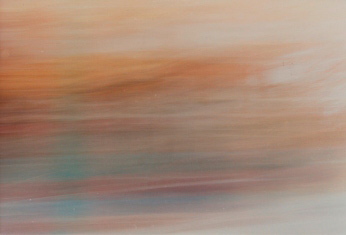Peter Ablinger
Weiss/Weisslich 22 — Sound Projection

[Peter Ablinger: from the series "Seeing and Hearing", 1994]
Weiss/Weisslich 22
The symphonies of Beethoven, condensed into 40 seconds.
Weiss/Weisslich 22 was conceived and produced in an electronic studio. About six to eight hours of symphonic music by each of the chosen composers were recorded onto harddisc: a selection of symphonies out of Haydn's and Mozart's works, as well as all symphonies by Beethoven, Bruckner, Schubert and Mahler. Ablinger had been looking for a method of how to transform time from a linear experience into a momentary or maybe aimless/formless one. He and the technicians finally found a way of condensing the stored information in a way that made the horizontal time line tipping over into a vertical column of condensed information. They clapped the music from the horizontal time line into a vertical sound column, defining the column might be exactly forty seconds wide. So instead of a few hours of Beethoven as a horizontal time line you have it turned round for 90 degrees resulting in a 40 seconds sound column. It seems like you also could call it compressed but that neither describes the idea behind it nor does it as they assured me describe correctly what the software program does. Peter Ablinger decided to use the term condensation. One of the ideas is: Not to lose any bit of information technically as well as philosophically. (On the contrary. Make available all the information of 150 years of European symphonic tradition in an at once audible hit singles time span of four minutes.)
Of course the information about 45 hours of symphonic music in this density turns into noise. Noise is information now and even a rather precise one. For those who know the symphonic tradition, that means music by Haydn, Mozart, Beethoven, Schubert, Bruckner and Mahler, it will be surprisingly unsurprising, whose composer's noise sounds which way. The traditional foreground/background conception, the signal to noise ratio conception cannot even been applied to a work like this. Noise is not the enemy of information, it is by its coloredness, by its texture, by the change from one texture to the next one, the enabler of information. (English translation edited by Bill Dietz)
[from: Christian Scheib, Ohne Titel, zu Peter Ablingers Installationen im Sophienhof in Kiel]
http://ablinger.mur.at/ww22.html
Peter Ablinger
see: Peter Ablinger — Hinweisstücke